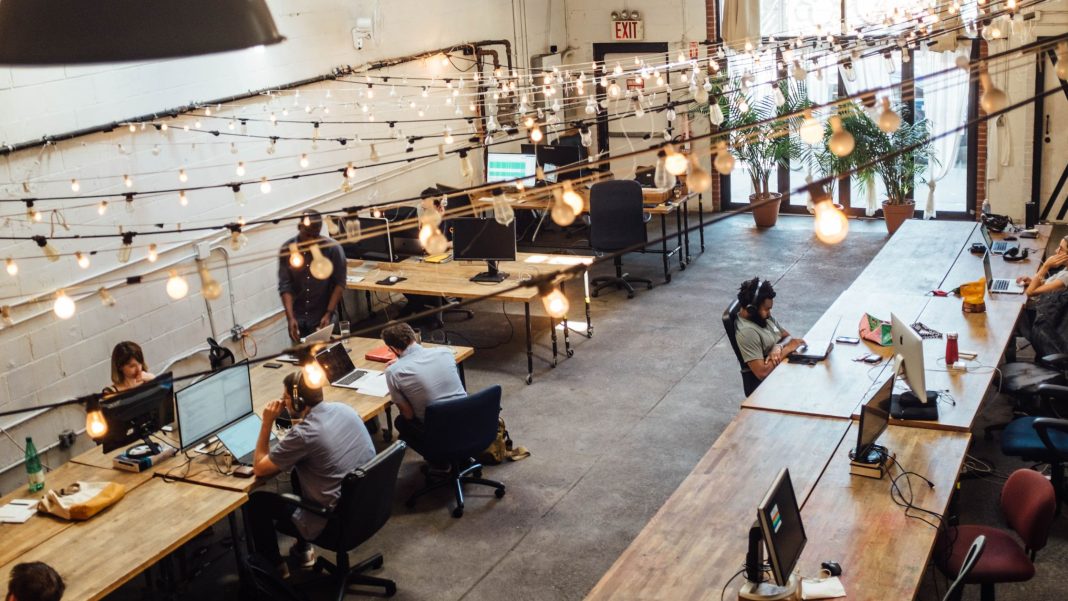In the ever-evolving landscape of the modern workforce, co-working spaces have emerged not merely as alternatives to traditional office setups but as harbingers of a new work culture ethos. The concept of co-working spaces has seen a meteoric rise in the last decade, revolutionizing the way professionals interact with their work environment. This article explores the journey of co-working spaces from mere shared locations to hubs of innovation, community, and flexibility, and envisions their future in the global work ecosystem.
The Birth of Co-working: A Historical Snapshot
The origins of co-working spaces can be traced back to the early 2000s when the first official co-working space opened its doors. The initial idea was simple yet revolutionary: provide a shared space where individuals could come together, work, and perhaps share a coffee. This simple concept was born out of necessity, as the rise of freelancers, entrepreneurs, and start-ups created a demand for flexible workspaces that could accommodate the ebb and flow of business needs.
A Cultural Shift in the Work Environment
Fast forward to the present, and co-working spaces have proliferated globally, with their rise paralleling the transformation of work itself. The digital revolution, the increasing number of remote workers, and the emphasis on work-life balance have all played a significant role in this shift. Co-working spaces have become more than just places to work; they are the breeding ground for networking, collaborations, and professional growth.
The Community Aspect: Co-working’s Unique Selling Proposition
What sets co-working spaces apart from traditional offices is the sense of community they foster. It’s not uncommon to see a mix of freelancers, remote workers, start-ups, and even large corporations sharing the same space, leading to a melting pot of ideas and expertise. This environment encourages a culture of sharing and innovation, where one can benefit from the experiences of others, potentially leading to collaborative opportunities that may not arise in a conventional office setting.
Design and Aesthetics: The Role of Environment in Work
Another significant aspect of co-working spaces is their emphasis on design and aesthetics. Recognizing the impact of the physical environment on productivity and creativity, these spaces often feature thoughtful interiors, ergonomic furniture, and inspiring atmospheres. From quiet zones and communal tables to lounges and green spaces, the design of co-working spaces caters to a variety of work styles and preferences.
Adapting to Change: Co-working Spaces in the Post-Pandemic World
The COVID-19 pandemic brought unprecedented challenges but also accelerated the evolution of co-working spaces. As health and safety became paramount, co-working spaces adapted quickly, implementing measures to ensure they could remain operational. They became lifelines for those who, due to the pandemic, suddenly found themselves working remotely, including employees of companies that had never before embraced remote work policies.
The Future of Co-working: Sustainability and Technology
Looking ahead, the future of co-working spaces seems interwoven with sustainability and technological advancements. Green co-working spaces, equipped with sustainable materials and practices, are on the rise, catering to an environmentally-conscious clientele. Additionally, the integration of technology such as virtual reality for remote collaboration and AI for personalized experiences is setting the stage for a new era of the shared workspace.
The Bottom Line
Co-working spaces are more than a trend; they represent a fundamental shift in the philosophy of work. They have evolved to embody flexibility, community, collaboration, and innovation. As the nature of work continues to change, co-working spaces are poised to adapt and flourish, offering a glimpse into the future of a global, connected workforce.
In conclusion, the evolution of co-working spaces from shared offices to community-centric hubs highlights the adaptive nature of work environments in meeting the changing needs of the modern workforce. With their emphasis on collaboration, flexibility, and sustainability, co-working spaces are set to redefine the concept of an office and how work is conducted in the years to come.

